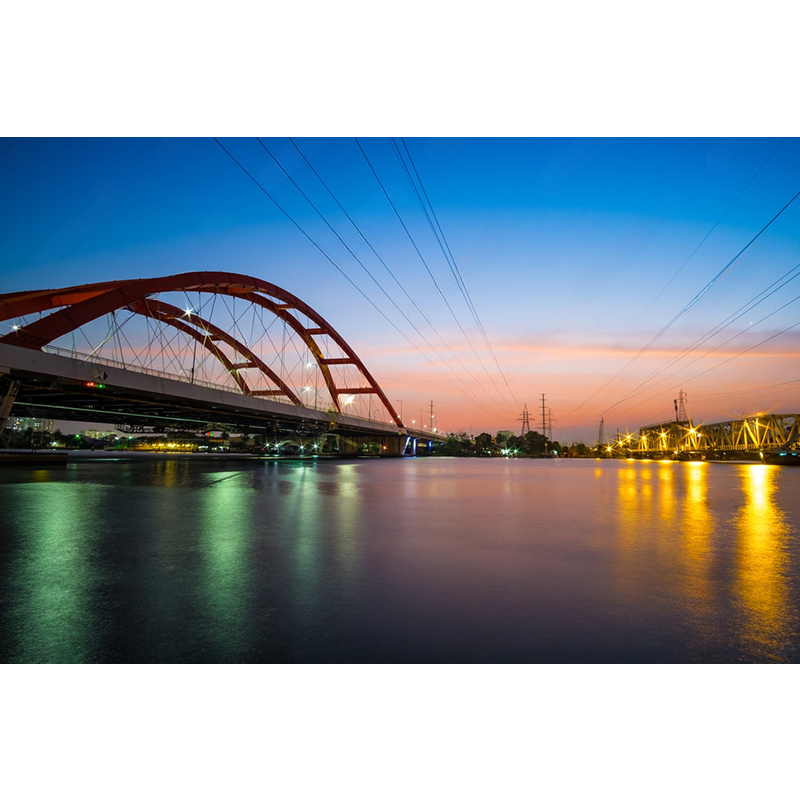Steel Box Girder Bridges in Coastal and Extreme Climates: Built to Withstand Nature’s Worst

In regions battered by high humidity, salt-laden air, typhoons, heavy snowfall, or seismic activity, bridge structures face extreme environmental stress.
These conditions accelerate corrosion, fatigue, and structural deterioration, posing long-term safety and maintenance challenges.
Steel box girder bridges, when designed and treated appropriately, offer a powerful solution.
Their closed-section geometry, high strength-to-weight ratio, and adaptability to anti-corrosion technologies make them ideal for harsh environments.
This blog explores how steel box girder bridges stand up to nature’s harshest forces — and why they are increasingly the structure of choice for coastal highways, mountain passes, and typhoon-prone zones.
Environmental Hazards for Bridges
Before exploring solutions, it’s important to understand the challenges:
1. Salt Corrosion
Coastal areas expose structures to airborne chlorides from sea spray, which aggressively corrode unprotected steel surfaces and compromise integrity over time.
2. Extreme Winds & Typhoons
Wind uplift, oscillations, and asymmetric loading require bridges with high torsional resistance and aerodynamic design.
3. Heavy Snow Loads
Mountain regions demand bridges capable of bearing high static loads and preventing snow accumulation.
4. Seismic Activity
Earthquake-prone zones require flexible structures with energy-dissipating capacities.
5. Humidity & Rain
Constant moisture accelerates coating degradation and rust development, especially in low-maintenance regions.
Why Steel Box Girders Excel in Harsh Environments
1. Closed-Section Geometry
Unlike open I-beams or trusses, box girders enclose all sides of the structure, minimizing exposure of inner surfaces to salt-laden air and moisture.
2. Corrosion Protection Systems
WZH Build uses a three-tier anti-corrosion strategy:
Hot-Dip Galvanizing
Epoxy Zinc-Rich Primer + PU Topcoat
Optional Weathering Steel Alloys (Corten)
These coatings provide long-term protection in even the most aggressive marine environments.
3. High Torsional Rigidity
Box girders resist torsion caused by high crosswinds or curved alignments, ensuring stability under cyclonic conditions.
4. Snow Shedding & Drainage Design
Smooth profiles and integrated drainage systems prevent snow accumulation and allow meltwater to drain efficiently.
5. Seismic Compatibility
WZH engineers design with isolation bearings, energy-dissipating joints, and ductile detailing to meet seismic codes.
Case Study: Coastal Expressway Bridge in Philippines
A recent WZH Build project involved a 90-meter steel box girder bridge along the Luzon coastline.
The structure was subjected to typhoons, humidity, and marine salt spray.
Engineers opted for double-cell box girders treated with high-performance epoxy + polyurethane coating. Foundations were paired with seismic isolators.
After installation, the bridge withstood two major typhoons within 18 months without structural degradation — affirming the durability of its design.
Design Recommendations for Harsh Climates
| Condition | WZH Design Recommendation |
|---|---|
| Coastal Marine Zone | Galvanized + Epoxy-Coated Box Girders + Stainless Fittings |
| High Snowfall Area | Load-rated roof panels + slope design for snow shedding |
| Earthquake Zone | Base isolators + flexible joints + ductile box configurations |
| High Wind Regions | Aerodynamic profile + lateral bracing + torsion control |
Maintenance Strategies
Regular Inspection Intervals
In coastal zones, bridges should be visually inspected annually and undergo coating condition assessment every 3–5 years.
Smart Monitoring Systems
Modern sensors allow real-time tracking of stress, temperature, and surface condition, especially useful for remote locations.
Recoating Cycles
Depending on the coating system, recoating is recommended every 10–15 years.
Why Clients Choose WZH for Extreme Condition Projects
20+ years of global project experience in tropical, polar, and seismic regions
Customized coatings and corrosion protection plans
ISO, CE, and SGS-certified production
In-house engineering and on-site technical support
Conclusion
Bridges are not just about connecting roads — they are lifelines in the face of nature’s fury.
Steel box girder bridges, with their enclosed strength, corrosion resistance, and seismic resilience, offer one of the most dependable solutions for infrastructure in challenging climates.
Whether it’s a coastal highway, alpine pass, or a typhoon corridor, WZH Build is equipped to deliver steel bridges that last — no matter the environment.





